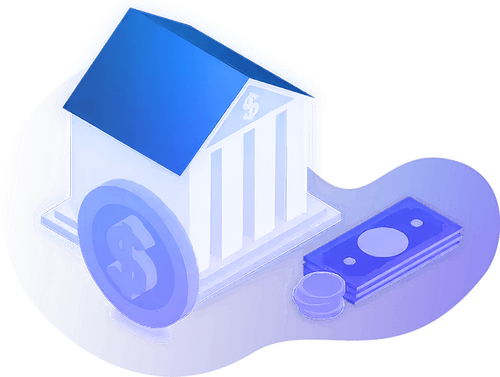


Starting your own pharmacy is an exciting venture, but remember, you're not in this alone. Connecting with industry professionals and seeking advice from those who've been in your shoes isn't just a good idea, it's essential. Their wisdom and experience are invaluable, and reaching out to them early can make a world of difference in your journey to success.
Initiating and nurturing these professional relationships early in your process of opening a pharmacy is crucial. This proactive approach provides you with a supportive network, comprehensive guidance, and practical solutions. Additionally, engaging with industry mentors and thought leaders extends your reach into the pharmacy community, offering diverse perspectives and experiences. These connections can be fostered by participating in industry events, joining professional organizations, and networking with fellow pharmacy entrepreneurs. By combining professional consultation with industry mentorship, you significantly enhance your prospects for success in the competitive world of pharmacy business.

Adequate research and a detailed plan are necessary to start your own pharmacy business. Unfortunately, there is no crystal ball to tell you whether your investment will pay off. It is your responsibility to ensure that your pharmacy will be profitable and beneficial to your community.
In order to serve your customers, you have to know who they are and where to find them. Conducting market research uncovers several consumer insights including demographics, psychographics, traffic patterns, and more. When looking at potential neighborhoods, consider the healthcare needs of the residents. Are you servicing an older community?
Or perhaps one with an abundance of new families and children? Differentiate your store by specializing in your community’s needs, whether it be geriatrics, pediatrics, pregnancy, sports health, active lifestyle, etc. Remember, big chains already sell to everyone. How can you serve your community?
Market research will help you determine your best location options.
Revenues, expenses, and free cash flow projections are the first glimpse into your pharmacy’s financial health. If you do not have a solid background in accounting, we highly recommend consulting an accountant for these projections.
You must realistically determine how you will obtain that financial capital using one or a combination of the following options:
Keep in mind that it may take several months after opening your doors to begin generating profit. Liquidity is key in your first year of business to ensure you do not run into any cash flow problems.
Your business plan should include enough detail for readers to capture the entire scope of your business, but concise enough to read in one sitting. Refer to the U.S. Small Business Administration for more guidance in writing your business plan.

Choosing the type of business structure you want for your pharmacy depends on the amount of legal liability you desire, tax liability, and how much you are willing to spend on ongoing costs of formation and administration, according to Entrepreneur. There are four common types of companies you can classify your pharmacy as:
Legal requirements will vary by state and by business structure, but the following are general guidelines to ensure smooth operations. For more information, visit Harbor Compliance Pharmacy Licensing or search requirements from your state’s Board of Pharmacy. Researching legal requirements is an important step in learning how to open a pharmacy, and you want to ensure that you have everything properly set-up before opening your business.
Before you begin operations, contact your federal, state, and local taxing authorities to set up the following accounts:
Insurance protects your pharmacy from liability in the event of a lawsuit. It is also necessary in order to engage in most contracts and practice agreements. Contact your local insurance broker to create a policy that is best for your pharmacy.
Developing both public and private health plan agreements ensure that your pharmacy is competitive and accessible to the community. Consider joining a Professional Services Administration Organization to better negotiate the terms of these contracts.

Mark BonDurant of Independent Rx Consulting has coached dozens of independent pharmacies through this process, and he notes a few realities of the financial aspect of pharmacy ownership:

Great amounts of research will go into selecting the perfect store location, whether you choose to rent, buy, or build. Visibility and accessibility of the store will be critical to ensure you get the most amount of traffic possible. You may consider setting up shop near a large chain pharmacy- take advantage of the extensive research they have done to identify the optimal locations. Also, you may have the opportunity to attract some of their customers and show what unique services you have to offer.
Once you have made your decision, it is now time to make the financial transaction and officially call the store your own. Make sure that you have all of the proper licenses and insurance required for owning or leasing property.
Hear honest advice from Pharmacy Matchmaker and Multi-Location Owner, Jeff Harrell

![]()

Designing the inside of your store is almost as important as selecting the physical location. Depending on the location you choose, you may have a lot of input or you may have no freedom to make design changes.

Hiring the right employees is an investment in the success of your business. It is important to establish a well-thought-out hiring process from the beginning and be consistent in your search. By picking and training the best team from the start, you can prevent a high turnover rate and retain your employees.
Write an employee manual that outlines both job descriptions and your pharmacy’s values, policies, and procedures. Because you are starting from scratch, you have the exciting privilege of creating your own company culture. You want to find people who will thrive in that culture. Beyond initial qualifications, look for candidates who share your values and passion for independent pharmacy. These individuals are responsible for your store’s success by engaging the community and turning them into loyal customers.
The size of your pharmacy will determine the number of individuals you hire. At the very minimum, you need to have a Licensed Pharmacist and Technician at your store. You may decide to hire more than one of each initially or in the future.
Once you have selected your team, lead them through a detailed training process that outlines a clear task hierarchy. Make sure to touch on ongoing tasks that can be done when the main work is finished- this will increase efficiency by making sure your staff is always keeping busy. Keep in mind that training is not a “one-time” event. You should be continuously educating your staff and refreshing their skills to stay up-to-date.
Taking time for open, two-way communication about each individual’s performance will make your staff feel appreciated and also give them pointers on how to improve. Establishing trust and creating an environment where your staff is comfortable asking questions will go a long way towards empowering your team. A good tactic to consider is continuous performance management intead of the typical annual review which leaves gaps in feedback.
Motivate your employees even further by challenging and rewarding them. If they have been chosen as a part of your team, they will have the passion to actually make a difference in the community. Keeping an encouraging work environment that promotes growth will instill the right values and set your team up for success.

Starting your own pharmacy is just like buying your first home – once you purchase it, you need to get everything that goes inside. This can seem overwhelming, but connecting with the right partners and resources will make your life easier and provide you with the best options for your pharmacy.
Your partnership with your wholesaler will directly affect your profitability. Building a strong relationship will go a long way in ensuring a stable, reliable inventory. When choosing a wholesaler, think about their proximity to your store, delivery schedules, and billing cycles. Other factors to consider are cost, customer service, products available for sale, and any discounts/incentives they may offer. If you join a PSAO, they typically provide guidance and contracting services to help you select a wholesaler that best fits your pharmacy’s needs.
Sometimes it may be necessary for a pharmacy to rely on multiple wholesalers. This could be due to price changes or availability of items. With PioneerRx, the software is equipped to automatically compare providers and manage inventory orders based on the current information available.
"I think we're at the beginning of a revitalization for community pharmacy. and what we need in our software vendor is someone that has no boundaries in what they can help us accomplish. And PioneerRx fits that mold."
— Thad Schumacher, PioneerRx UserWhen Tabraiz Khan first opened Pharma1 Pharmacy and Wellness Center about 3 years ago, he chose PioneerRx as his pharmacy software from day one. He had heard good things from his professional peers and ended up deciding that PioneerRx was the right fit. “PioneerRx Pharmacy Software is honestly the most asked-about, number-one rated system out there,” begins Khan. “I knew I would eventually be getting into compounding, so I needed a standalone software that could do a little bit of everything, and that [led me] to PioneerRx. And it was just really simple to use, so I love the convenience of it.” His newly-hired PIC Matthew Kamphaus also notes how easy the software has been to learn and use on a daily basis.
Having the right tools and technology in your pharmacy allows you to innovate your workflow, gain loyal customers, and allocate time and resources efficiently. When opening a new independent pharmacy and selecting your pharmacy management system, it is vital to find a system that will grow with you. Think about where you see your business 5, 10, 15 years down the road. Will your pharmacy system be able to keep up? Make sure to also consider what features are included vs. what are add-ons. Are you going to spend even more money buying all the necessities for your system?
PioneerRx pharmacy software is the #1 software chosen by independent pharmacists to open their new stores with. Let us show you our passion for saving and revitalizing independent pharmacy and explore our full list of pharmacy features.
To further optimize your pharmacy system, you may decide to incorporate additional technology. Our mobile apps give you the flexibility to bring your workstation with you anywhere in the pharmacy – or outside of the pharmacy! Choose from valuable additions like HIPAA-Compliant 2-Way Messaging, Mobile Refills, Patient Counseling, Mobile Delivery, Drive-Thru, and Mobile Inventory. PioneerRx also partners with around 70 technology vendors to provide products that integrate seamlessly with our software. From automation to inventory to IVR and more, we connect you with the tools you need to take your pharmacy to the next level.

Every small business budget, no matter how limited, needs a line for marketing. Loyal customers are formed through trust, and how can customers trust you if they don’t know you exist? Your marketing effort will slowly build over time, but there are a few key areas to start thinking about from the start:
When you are trying to find out more about a business, where do you usually start? Most people immediately look online to find a website with more information. In today’s market, having a website is crucial for becoming a key contender in the competition. Again, this can start off very simple and progressively expand alongside your growing business. You may also consider utilizing social media platforms such as Facebook, Twitter, and Instagram. Getting the word out there and creating a brand image will establish your pharmacy’s credibility and outreach potential. Make sure that your branding is easily recognizable and cohesive across all platforms.
As an independent pharmacy, you already have the potential for a niche value that can set you apart from the typical chain pharmacies. However, this value is worthless if people do not know about it. Many patients are simply unaware of the unique services that a community pharmacy can offer them. From the start, you need to assess your local competition and differentiate your pharmacy’s services from the others in your area. Then make those services known- don’t be afraid to be proud of your work! Make it a point to also strengthen your personal touch. Build meaningful relationships with your customers that will foster loyalty and allow you to better serve them.
Paid advertising is important, but community engagement is key to starting an independent pharmacy. Talk to other independent businesses in your area and build relationships with healthcare providers and professionals. Forming a strong network will tie you into what is going on in your community and give insights on how to best operate your business. Find opportunities to participate in local events and get to know potential customers. You should also consider getting involved in local government boards or joining pharmacy organizations.
Once you have proved your value to potential customers, incentives are a good way to transform them into long-term customers. Offering discounts, having a referral rewards program, and providing free routine health screenings are all ways your pharmacy can show customers you care while still growing your business. Referrals will expand your customer reach and boost credibility, and free screenings can guide participants to fill any resulting prescriptions at your store. This is your chance to impress them! Every store’s marketing strategy will be unique – so use these tips as a guideline to creating the best plan for your pharmacy.